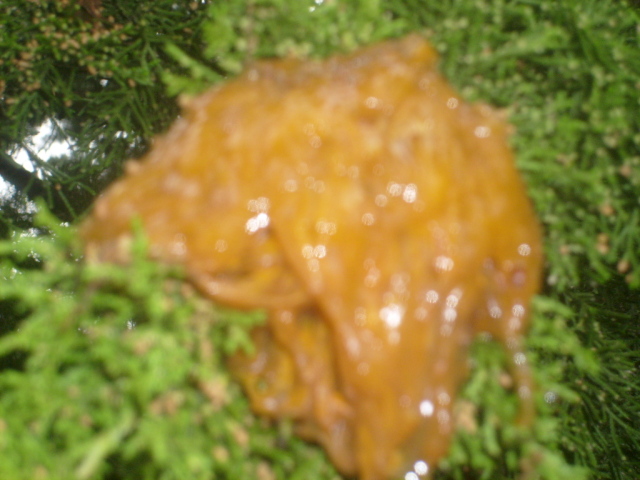Question
 Tree Warts
Tree Warts
We have two cedar trees that appear to have "warts" or gall and want to know what if any danger there would be to the trees and surrounding shrubs.
During the rainy season this Spring these hard knots turner to an orange slime then dried to hard brown knots.
AnswerThis is a disease called cedar apple rust. The gelatinous stage of cedar apple rust is in the spring. This is how the fungi spreads by producing spores. All Rust fungi need to two hosts to complete the life cycle. In this case cedar and the other host apple type species. Most of the year the cedar stage of the fungi will be small golf ball size "balls" on the limbs. These really do not harm the cedar tree and the dried ones will drop off after a couple of years. And are not real noticeable except when they "bloom" in the spring. Does not really harm the cedar trees.
On apples trees it does cause damage to the foliage and the fruit. The rest of the disease cycle is on apples. Here it shows up as blotches on the leaves and on the skin of the apple fruit. Symptoms of cedar-apple rust on flowering crab and apple are easily identified. In late spring or early summer, bright, yellow-orange spots approximately 1/8 to 1/4 inch in diameter form on the upper surface of leaves. These spots gradually enlarge and turn orange. Small black fruiting structures (pycnia) of the fungus form in the center of the lesion. An orange gelatinous matrix often may be seen oozing from the fruiting structures during wet weather. Eventually, an orange, cup-like fungal structure (aecium) forms on the bottom surface of the leaf directly beneath the lesion on the upper surface. This structure has small, tube-like projections in which dusty-orange spores of the fungus are produced.
Leaves with numerous spots drop during the summer. Premature defoliation weakens the tree and reduces fruit set and yield the following year. Trees with severe defoliation also are susceptible to other diseases. Cedar-apple and cedar-quince rust may cause fruit lesions. Diseased fruits develop deep pits or become distorted and usually drop before harvest.
Fungicides are used on apple trees but no control is needed on the cedar trees. Here is a fact sheet that gives more information if you want it. http://plantclinic.cornell.edu/FactSheets/cedar-applerust/cedar-applerust.htm






